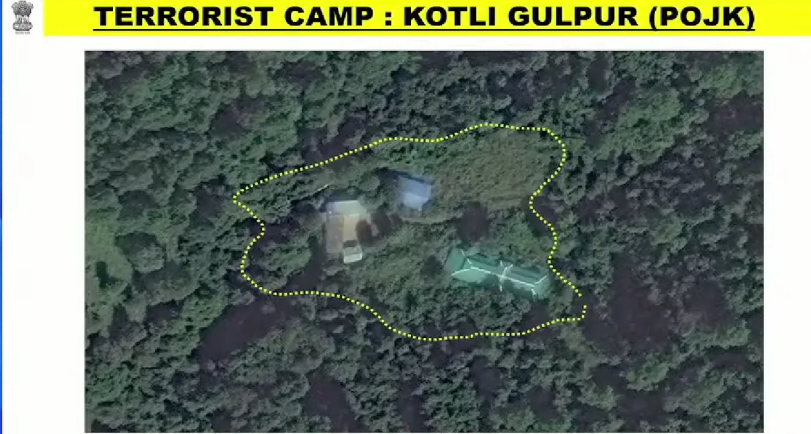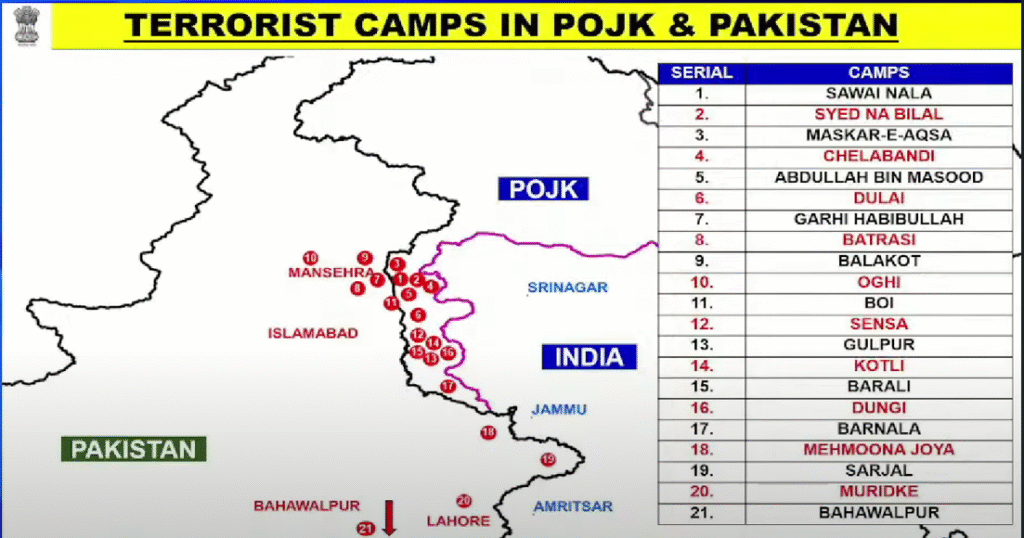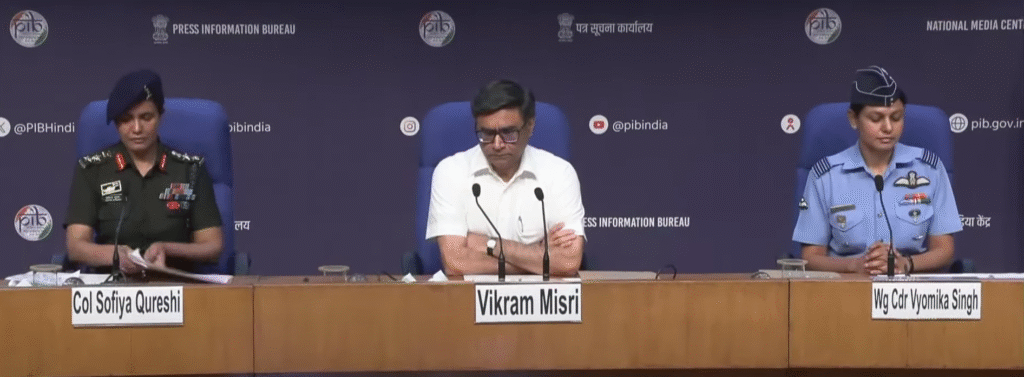
Table of Contents
OPERATION SINDOOR: What It Is, Why It Matters, and Everything You Need to Know
The Tragic Attack in Pahalgam – April 22, 2025
OPERATION SINDOOR – India’s Powerful Stand Against Terror: what you need to know On April 22, 2025, a tragic and heartbreaking terrorist attack took place in Pahalgam, a beautiful tourist spot in Jammu & Kashmir, India. A group of terrorists, who were trained and supported from across the border in Pakistan, specifically from the group Lashkar-e-Taiba, One of the terrorists involved, reportedly a former high-ranking officer in the Pakistan Army, targeted innocent Indian tourists based solely on their religious identity.
In this brutal attack, 26 people were killed, including a tourist from Nepal, making it the deadliest terrorist strike on civilians in India since the infamous Mumbai attacks in 2008. The attack in Pahalgam was marked by extreme barbarity, with the victims mostly killed with head-shots from close range and in front of their families. Family members were deliberately traumatized through the manner of the killing, accompanied by the exhortation that they should take back the message to India. OPERATION SINDOOR – India’s Powerful Stand Against Terror: what you need to know
These people were ordinary travelers—men, women, and families—who had come to enjoy the peaceful surroundings of the region. Instead, their lives were cut short in a horrifying way that shocked the entire country and left many grieving families behind.
About The Resistance Front (TRF)
The features of this attack also tie in with Pakistan’s long track record of perpetrating cross-border terror in India, which is well documented, and beyond question.
A group calling itself The Resistance Front (TRF) has claimed responsibility for the attack. This group is a front for the UN-proscribed Pakistani terrorist group, Lashkar-e-Taiba. Sheikh Sajjad Gul, a 50-year-old Kashmiri and head of Lashkar-e-Taiba proxy The Resistance Front (TRF), has emerged as the mastermind of the Pahalgam terror attack.
Nine strikes including Pakistan-occupied Kashmir.
The nine targeted sites were:
- Bahawalpur: Headquarters of Jaish-e-Mohammed, where key leaders and operatives were reportedly present.
- Muridke: A major Lashkar-e-Taiba base, housing training facilities and administrative centers.
- Sialkot: Identified as a logistical hub supporting cross-border infiltration.
- Tehra Kalan: A lesser-known site believed to be a covert training ground.
- Muzaffarabad: Capital of PoK, hosting multiple terror training camps.
- Kotli: Known for harboring militant operatives and facilitating movement across the Line of Control.
- Bhimber: Strategically located near the LoC, serving as a staging area for militants.
- Rawalakot: A site with reported militant safe houses and support structures.
- Chakswari: Believed to be a recruitment and indoctrination center for new militants.


-Key locations such as Bahawalpur are identified as crucial for understanding the operational strategies of terrorist organizations like Lashkar-e-Taiba. It outlines how these areas serve as hubs for terrorist activities. –

Aim of Operation Sindoor: India’s Strategic Strike Against Terrorism
OPERATION SINDOOR is not just another military action—it is a bold and carefully planned message from India to the world: terrorism will not be tolerated, and national security comes first. Launched in the wake of the devastating Pahalgam attack that killed 26 innocent civilians, this operation underscores India’s resolve to act decisively and with precision. OPERATION SINDOOR – India’s Powerful Stand Against Terror: what you need to know
What Was the Purpose of Operation Sindoor?
At its core, Operation Sindoor had a mission to:
* To dismantle terrorist infrastructure operating within Pakistan, especially those backed by groups like Lashkar-e-Taiba and Jaish-e-Mohammed.
*To demonstrate India’s improved military strength and precision, showing the world how far it has come since previous operations like the Balakot airstrikes of 2019.
*To strike with accuracy while taking care to minimize civilian casualties—a major priority in this operation.
This wasn’t about revenge. It was about justice, strategy, and national defense.
Key Highlights of Operation Sindoor
- 9 coordinated strikes were carried out across multiple locations in Pakistan, including Pakistan-occupied Kashmir (PoK).
- The operation relied on advanced aircraft and weapons, including Rafale jets, SCALP missiles, and AASM Hammer bombs—showing just how much India’s military has evolved.
- Targets were not chosen randomly; places like Bahawalpur, a known base for Lashkar-e-Taiba, were strategically selected for their high importance to terrorist operations.

Why This Operation Matters
Unlike previous actions, Operation Sindoor focused heavily on intelligence-based targeting. Every strike was aimed at high-value assets—locations that were being used to train, plan, or hide terrorist operatives.
This shows a shift in India’s defense strategy:
📈 From reactive to proactive
🛰️ From basic to technologically advanced
⚔️ From isolated responses to coordinated military precision
It reflects India’s commitment to protect its citizens while addressing larger global concerns about terrorism and instability in the region.OPERATION SINDOOR – India’s Powerful Stand Against Terror: what you need to know
A Signal to the World
Operation Sindoor also sends a strong diplomatic message:
India will work alone if it must, but it stands firm against terrorism not just for its own people—but for the security and stability of the entire South Asian region.
Pakistan’s Role in Terrorism
While global efforts continue to combat terrorism, Pakistan remains under scrutiny for its long-standing and troubling association with terrorist groups. Despite repeated denials and diplomatic statements, the evidence of Pakistan acting as a safe haven for terrorists is well-documented and cannot be ignored.
Training Grounds for Terrorism
Pakistan hosts numerous training camps that facilitate the recruitment, training, and sheltering of terrorists, including globally banned organizations such as Lashkar-e-Taiba, Jaish-e-Mohammed, and their offshoots like the TRF (The Resistance Front). OPERATION SINDOOR – India’s Powerful Stand Against Terror: what you need to know
These camps often operate with support or deliberate oversight by local authorities and segments of the military, allowing extremists to train and launch cross-border attacks with alarming ease. This infrastructure poses a direct threat to regional and international security.
Media Misinformation and Downplaying the Threat
The narrative in certain media outlets often attempts to downplay the presence and influence of these terrorist organizations, misleading both domestic and global audiences. By controlling the flow of information and minimizing the scale of these operations, the real danger remains underreported or ignored.
This misrepresentation only emboldens extremist elements, giving them room to regroup and re-strategize.
Deception at International Forums
Pakistan’s track record of misleading international bodies is also deeply concerning. A prominent example is its interaction with the Financial Action Task Force (FATF). Despite being under international pressure to act against terrorism financing, Pakistan has frequently provided incomplete or misleading information to avoid blacklisting.
The Sajid Mir case highlights this duplicity. Initially declared dead by Pakistani authorities, Mir—one of the masterminds behind the 26/11 Mumbai attacks—was later found alive and arrested only after mounting international pressure. This incident exposed the deliberate misinformation being fed to global watchdogs.
Silencing Accountability at the UN
Another example is Pakistan’s push to remove references to the TRF from the April 25, 2025 UN Security Council Press Statement following the Pahalgam attack. This effort to erase TRF’s name from official records underscores Pakistan’s consistent attempt to shield known terrorist groups from global condemnation.
The Global Implication
Pakistan’s actions do not just affect India or South Asia—they undermine the credibility of international anti-terrorism efforts. Shielding or ignoring terrorist infrastructure erodes trust, stalls peace-building, and poses a global security challenge.
India’s Powerful Reply
OPERATION SINDOOR – India’s Powerful Stand Against Terror: what you need to know During the attack in Pahalgam, one of the terrorists—believed to be a former top officer in the Pakistan Army—spared one woman’s life, but only to send a warning to the Prime Minister of India.
India didn’t stay silent. After the success of Operation Sindhoor, the country gave a strong reply—not just with action, but with pride. Two brave women officers, Colonel Sofia Qureshi and Wing Commander Vyomika Singh, stood in front of the nation to share the details of the mission.
Their powerful presence showed the world that India is not afraid. It was more than just a press conference—it was a clear message: India stands strong, united, and ready. The image of these two women in uniform said it all—this was India’s victory.
OPERATION SINDOOR – India’s Powerful Stand Against Terror: what you need to know
- Why Pay Tolls Again and Again? unlimited travel for Just ₹3000
- Why Most Diets Fail? Free weight loss Plan Is Going Viral – Here’s What’s Inside
- 10 Tiny Daily Habits That Lead to Big Weight Loss
- How Tata Motors Plans to Make EVs Mainstream in 2025
- Galaxy S25 Edge: Samsung’s Thinnest, Smartest, and Most Stylish Phone ever







